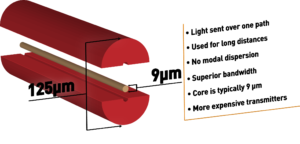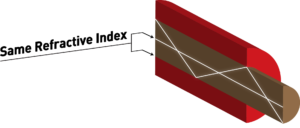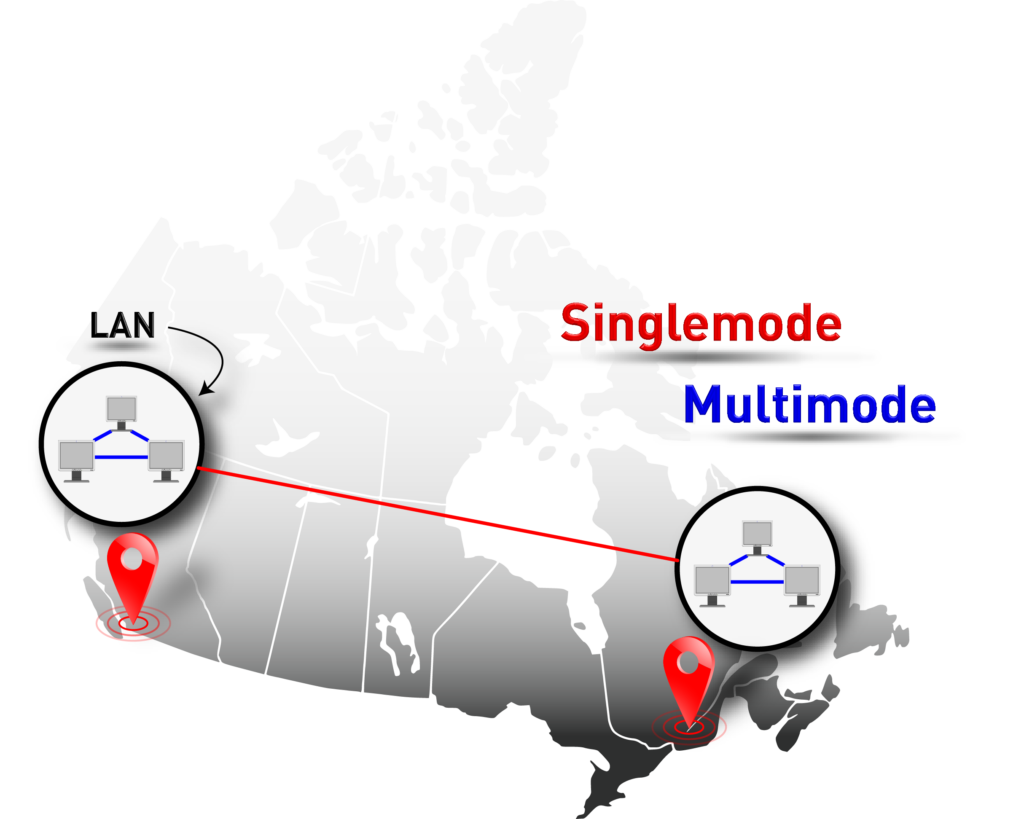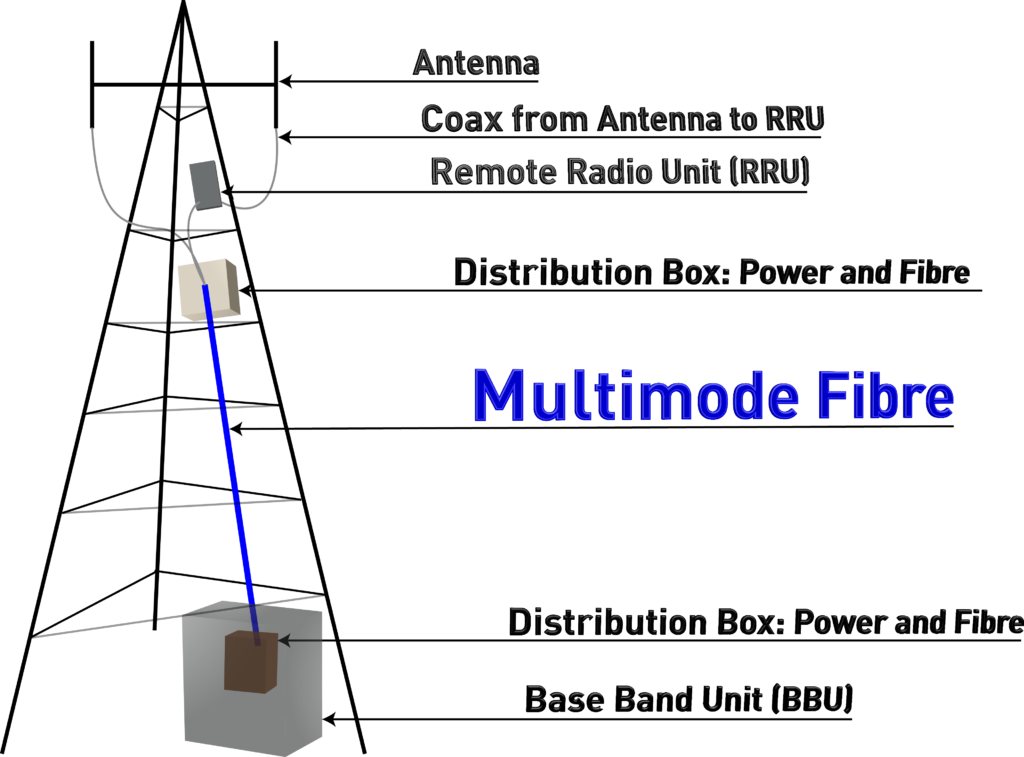Types of fiber
As we saw in Chapter 2, fibres act as very thin tunnels through which optical signals travel. We also saw that there are a number of characteristics which define them. These characteristics help classify the different families of cables: single-mode (see Figure 1) and multi-mode (see Figure 2). Each one possesses a distinctive set of traits based on how light travels through it. The main determinant of which family a particular fibre belongs to is the diameter of its core.
Singlemode Fibres
 Figure 1
Figure 1
Multimode Fibres
 Figure 2
Figure 2
Step-Index and Graded-Index
There are two types of multimode fibres: step-index (SI) and graded-index (GI). They are differentiated by the differences of the refractive indexes of their cores. A refractive index measures how much a ray of light is bent when it passes from one medium to another. Step-index fibres possess a core that has a homogeneous refractive index such that light gets reflected in a jagged manner throughout the cable. Conversely, the refraction index of the core of graded-index fibres gets progressively greater towards the central axis. As a result, light travels down these fibres in a sinusoidal manner.
Step-Index

Figure 3
Graded-Index

Figure 4
Applications
The properties and costs associated with each type of fibre make it such that single modes are typically used for general long haul, outdoor applications (see figure 5); whereas multi-modes are reserved for specific short-distance, indoor utilization. For example, single-mode fibre is implemented across Canada to enable optical communication between Vancouver and Montreal. Conversely, multimode fibre is used in local area networks (LANs) such as in an office or a campus. Multimode is also used inside antenna towers as a lighter, higher bandwidth alternative to traditional coax cabling (see Figure 6).
 Figure 5
Figure 5
 Figure 6
Figure 6
In conclusion, there are two types of optical fibres: single-mode and multimode. Single modes possess a narrower core and are used for long-distance applications, such as long-haul optical communications. Conversely, multi-modes possess a wider core and are used for short distance uses, such as in LANs and antenna towers.
Join us for the next chapter as we will see how the different types of connectors are just as important as the internal composition of fibre in determining how it is used.
